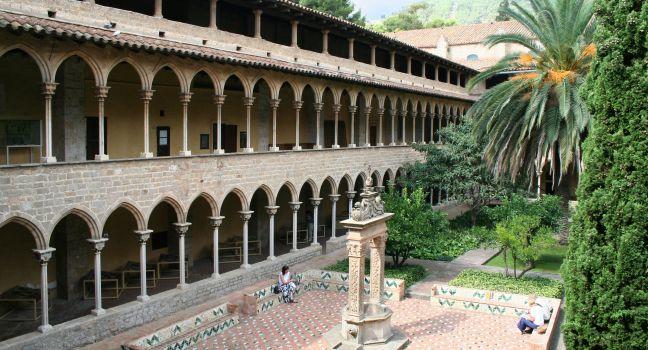Real Monestir de Santa Maria de Pedralbes

This marvel of a monastery, named for its original white stones (pedres albes, from the Latin petras albas), is really a convent, founded in 1326 for the Franciscan order of Poor Clares by Reina (Queen) Elisenda. The three-story Gothic cloister, one of the finest in Europe, surrounds a lush garden. The day cells, where the nuns spent their mornings praying, sewing, and studying, circle the arcaded courtyard.
The Capella de Sant Miquel, just to the right of the entrance, has murals painted in 1346 by Catalan master Ferrer Bassa. Look for the letters spelling out "No m’oblidi/ digui-li a Joan/ a quatre de setembre de 1415” ("Do not forget me / tell John / September 4, 1415") scratched between the figures of St. Francis and St. Clare (with book and quill). While the true meaning of the message is unknown, one theory is that it was written by a brokenhearted novice.
The nuns' upstairs dormitory contains the convent's treasures: paintings, liturgical objects, and seven centuries of artistic and cultural patrimony. Temporary exhibits are displayed in this space. The refectory, where the Poor Clares dined in silence, has a pulpit used for readings, while wall inscriptions exhort Silentium ("Silence"), Audi tacens ("Listen carefully"), and Considera morientem ("Consider, we are dying"). Notice the fading mural in the corner, and the broken paving tiles—according to unsubstantiated legend, the result of the heavy cannon positioned here during the 1809 Napoleonic occupation.
The monastery is now a museum, housing permanent exhibitions on its own art and legacy as well as third-party special exhibitions from time to time. There are occasional open-air concerts in the cloister, especially of Medieval music; check local event listings and book a seat if you can.



